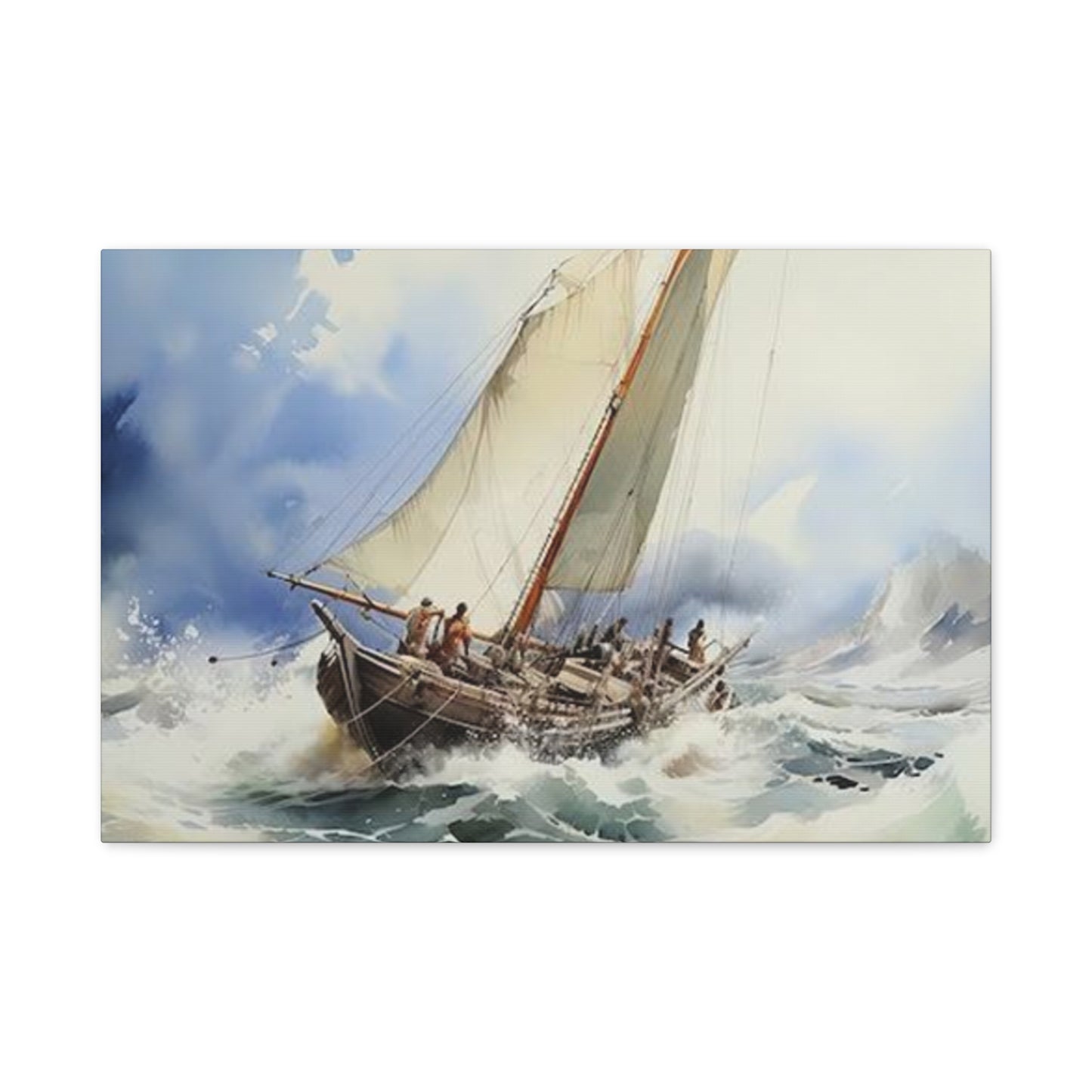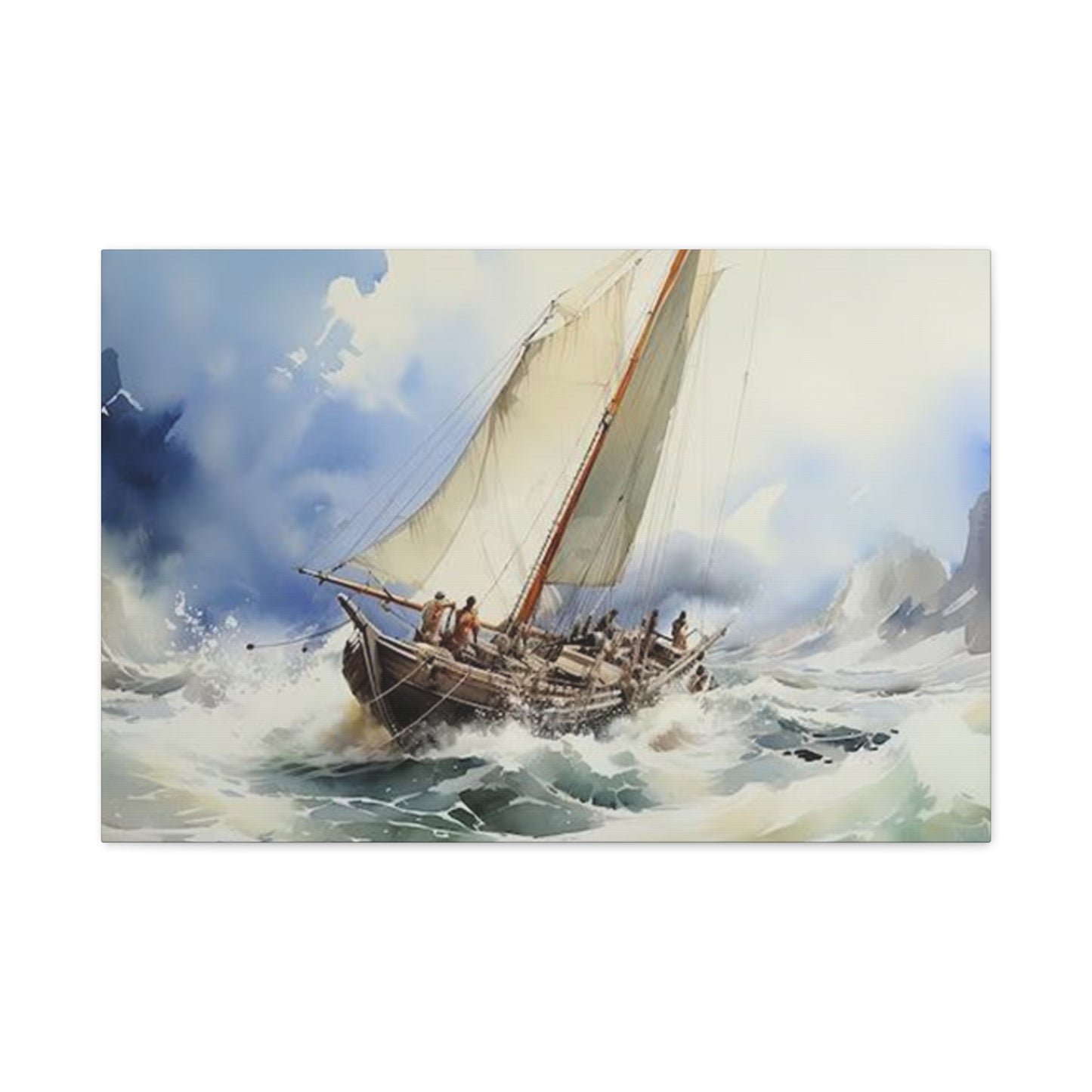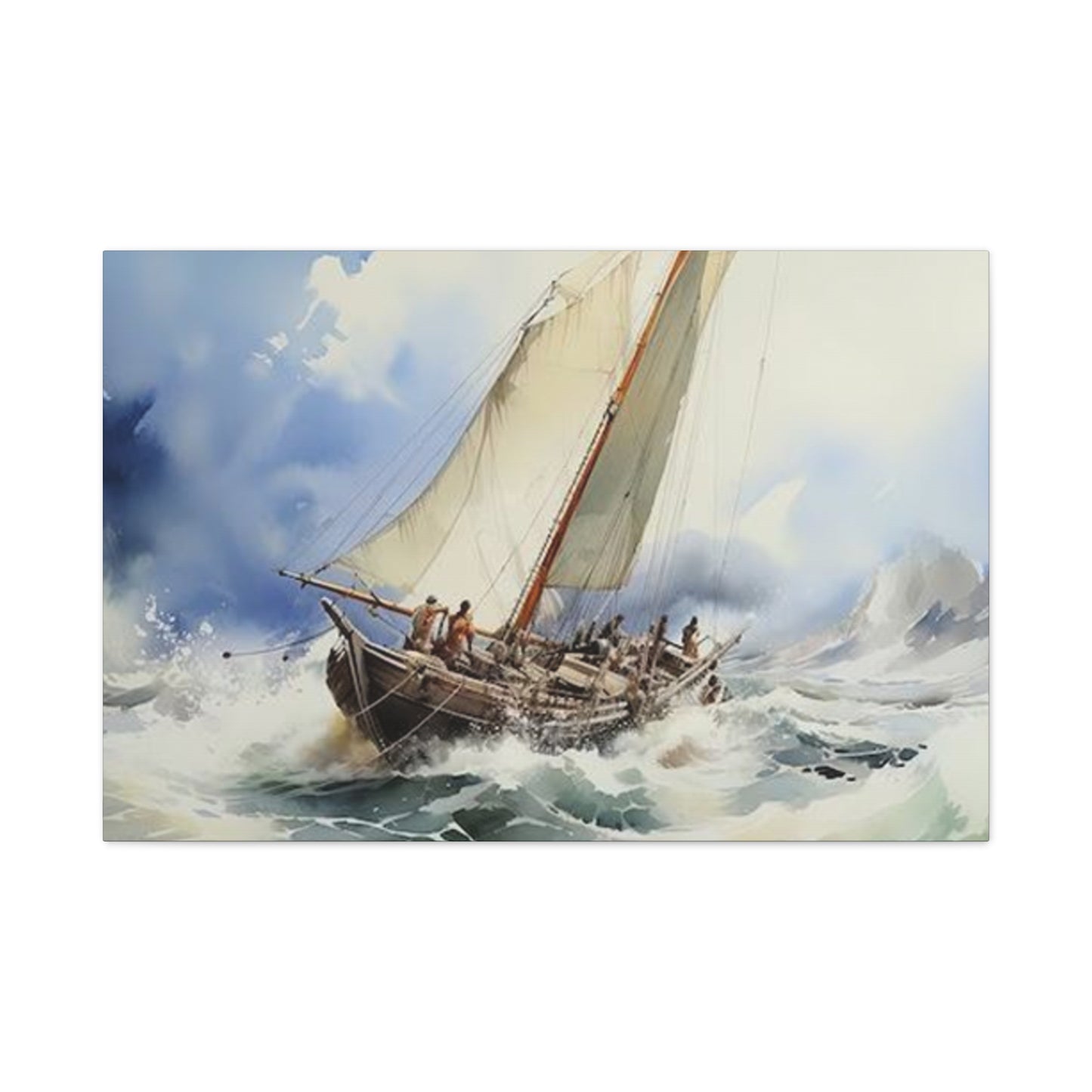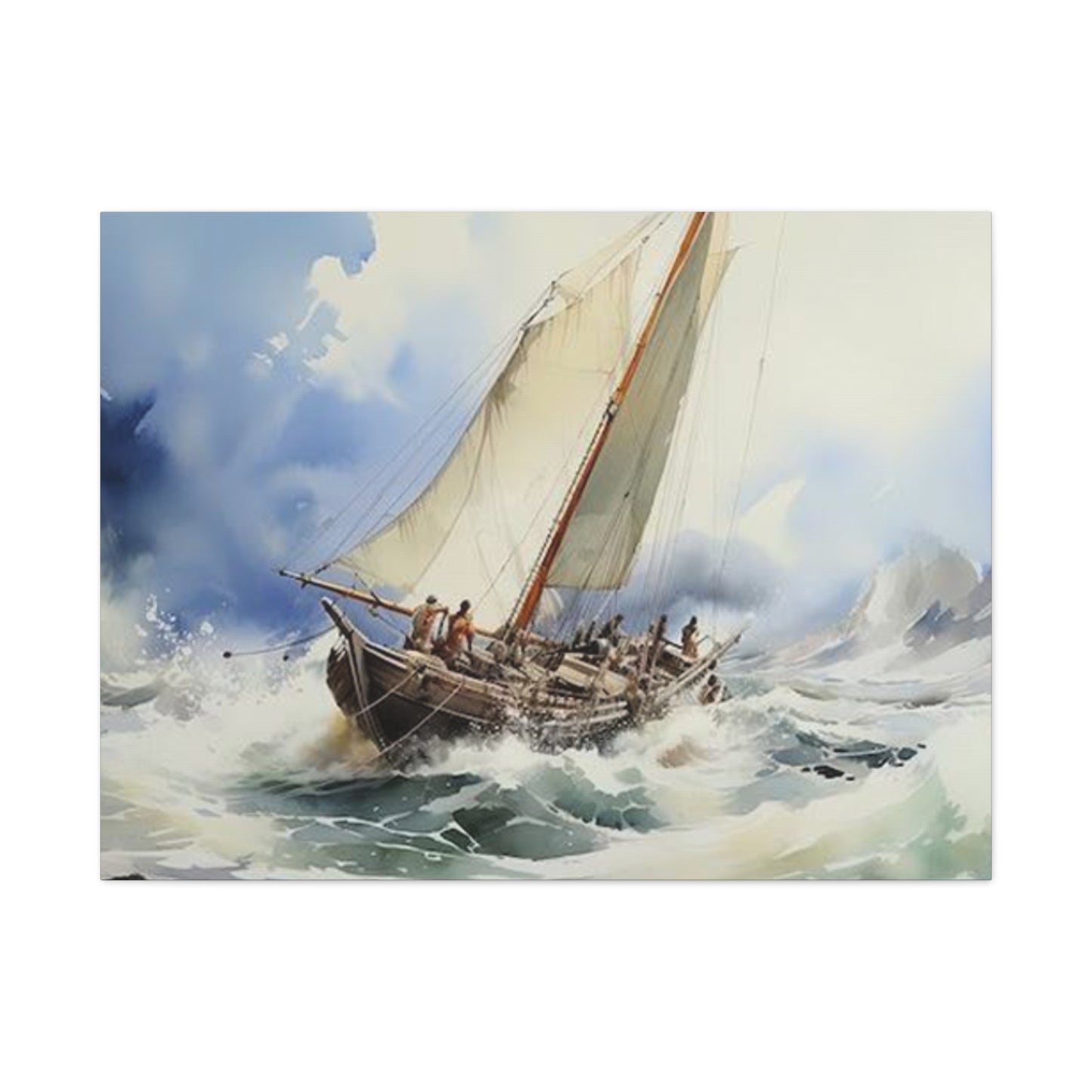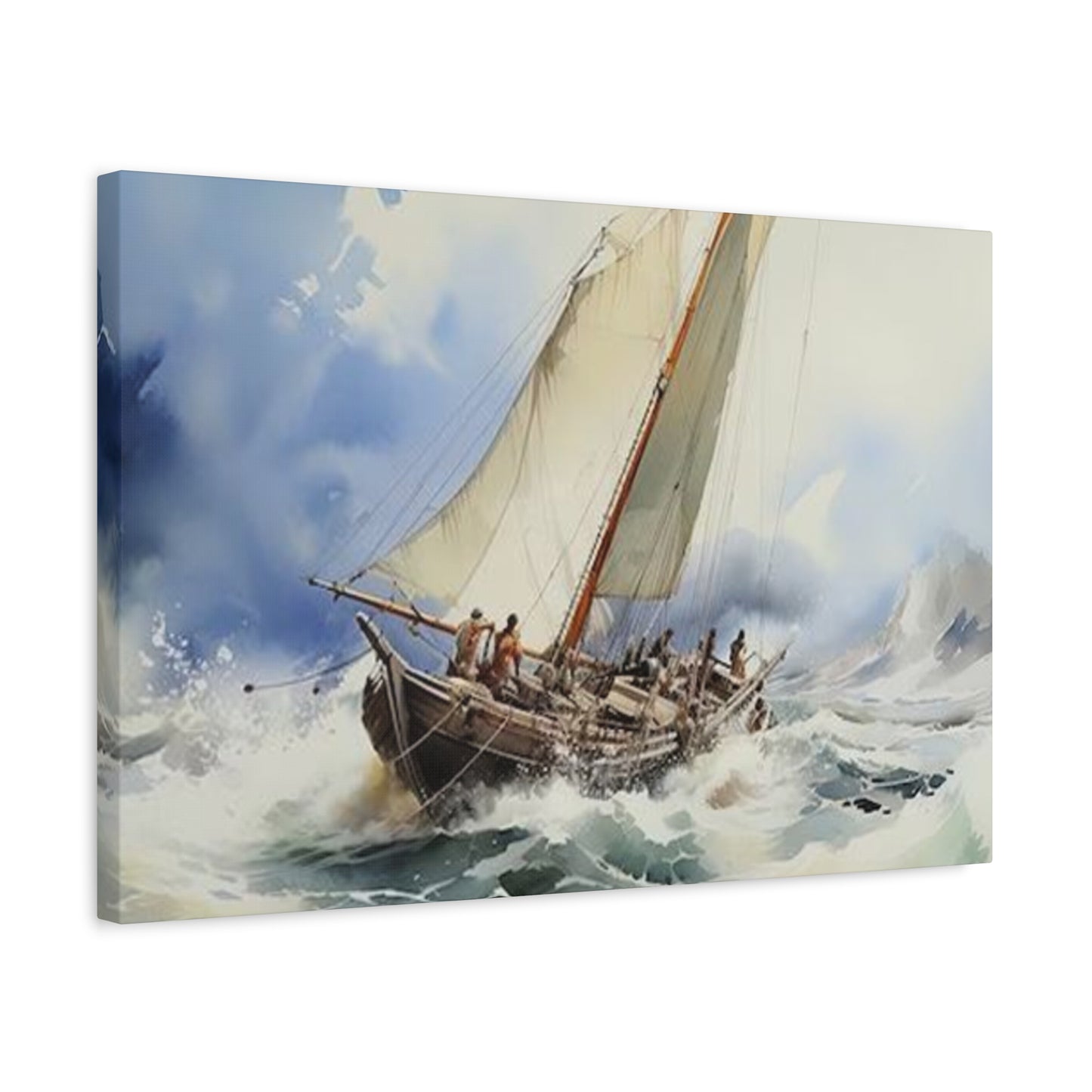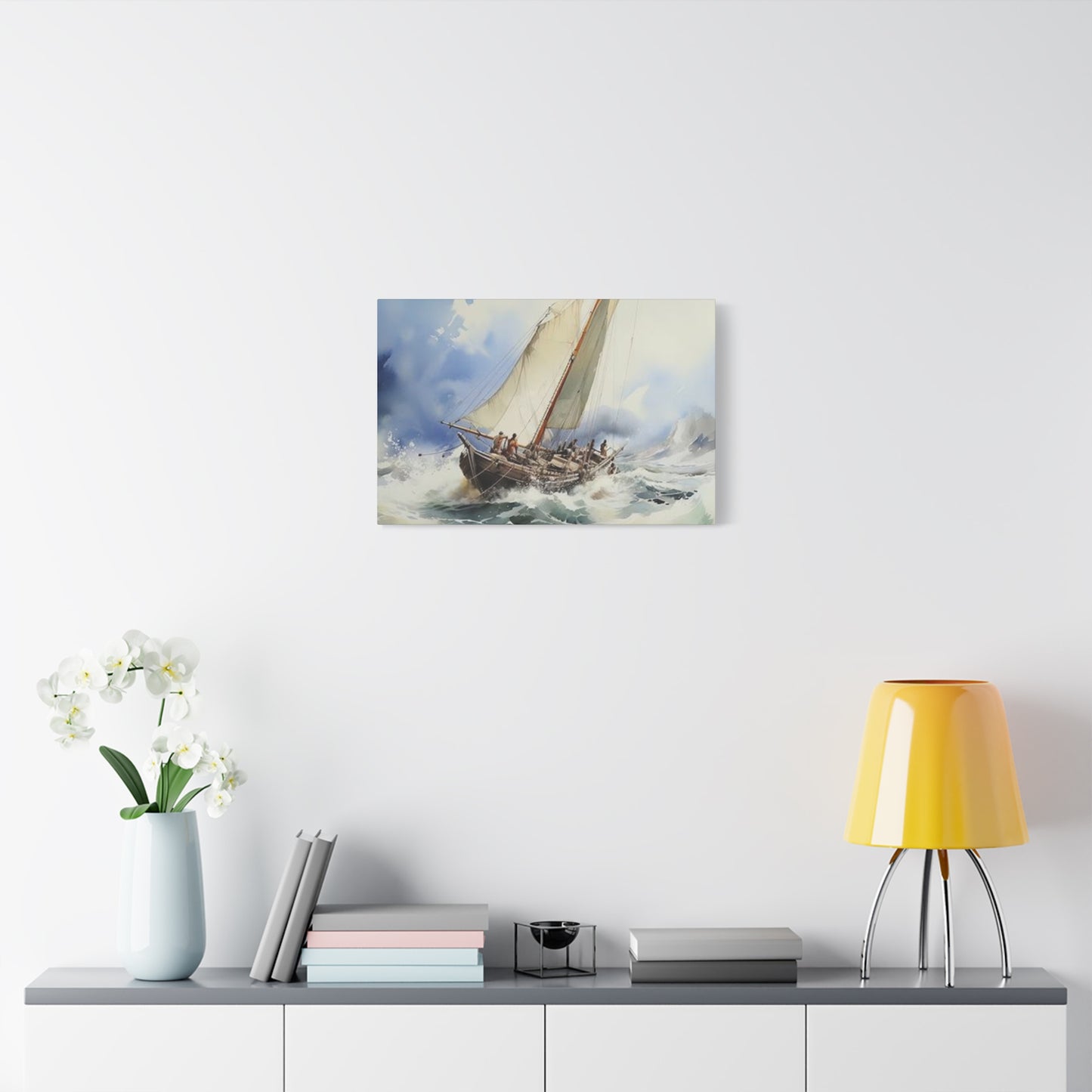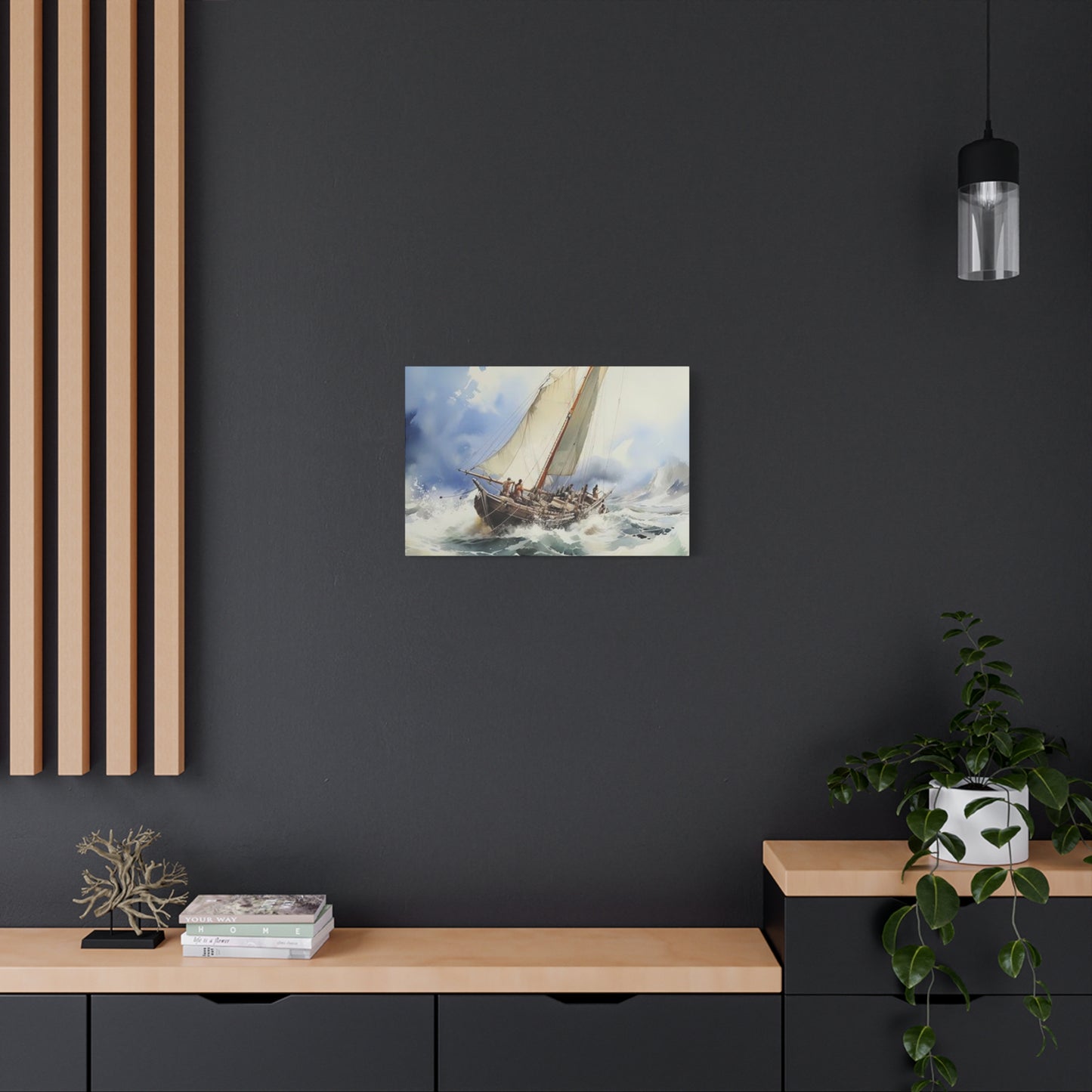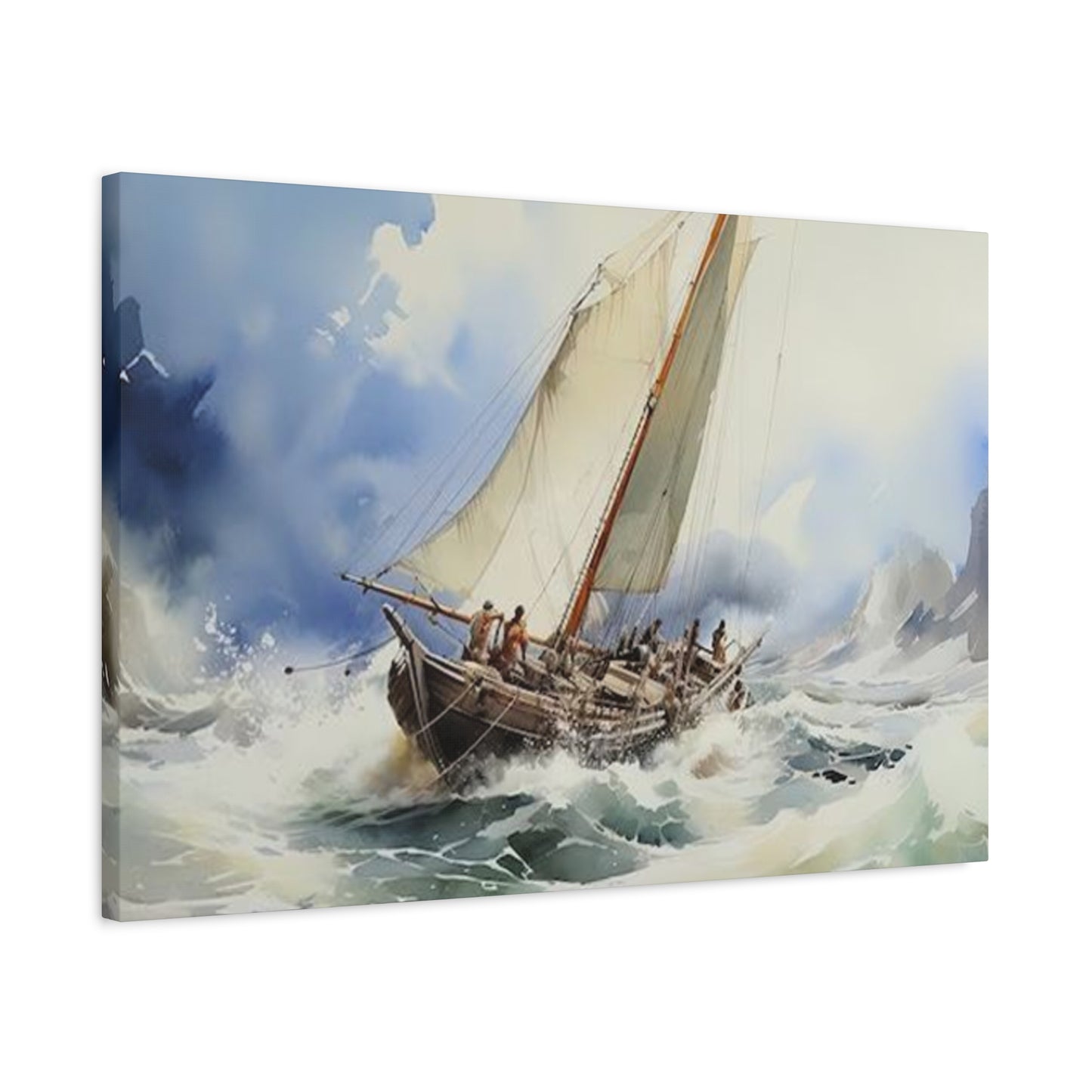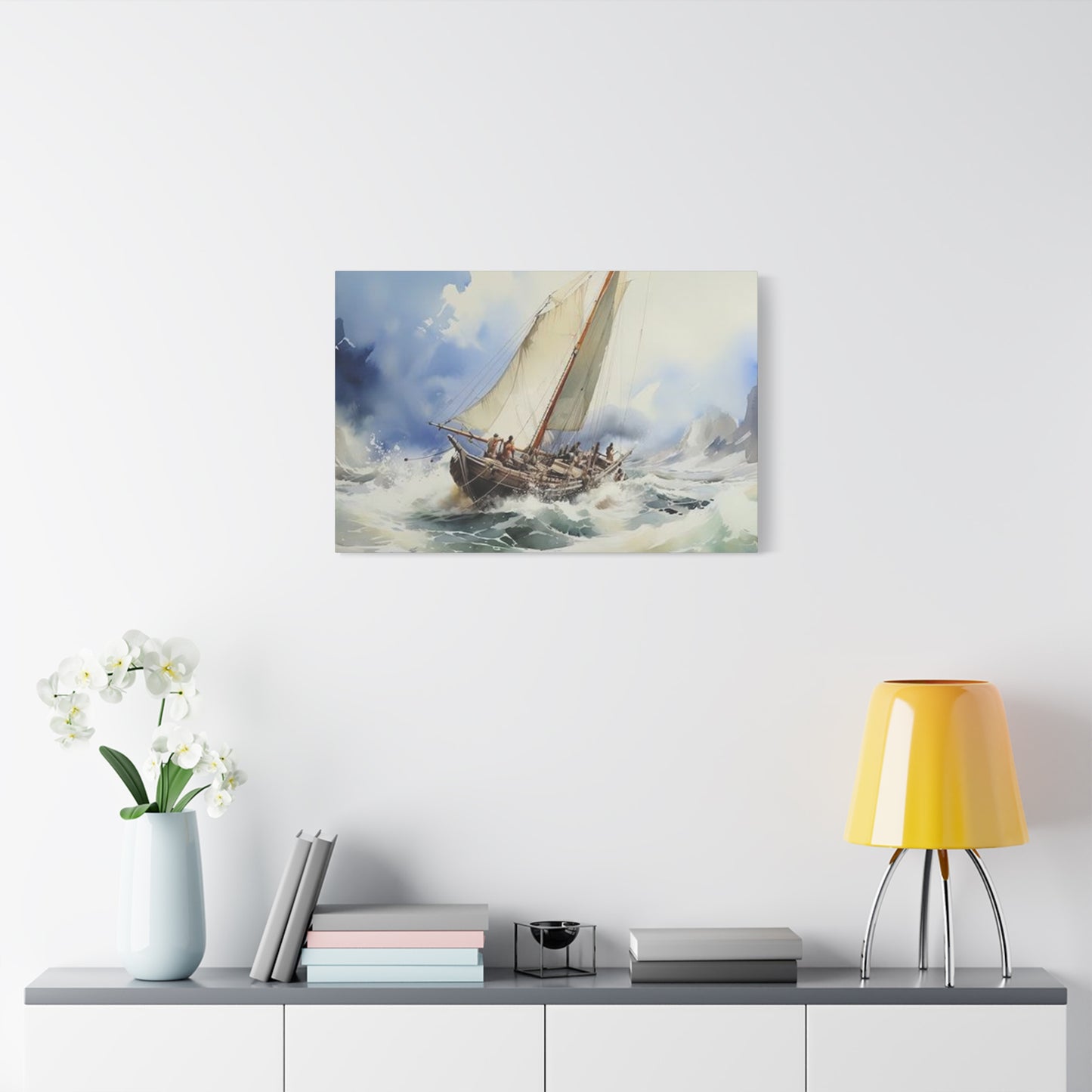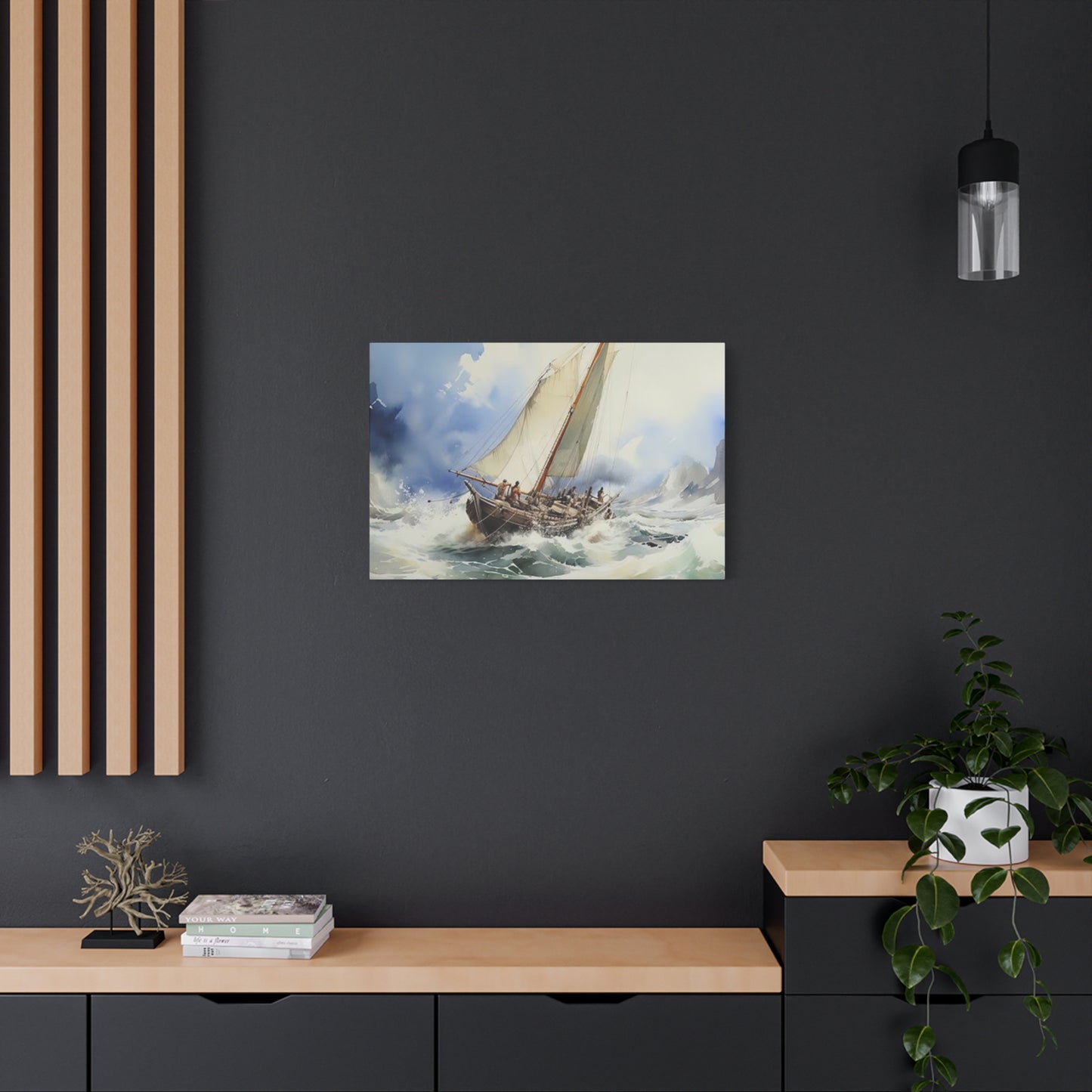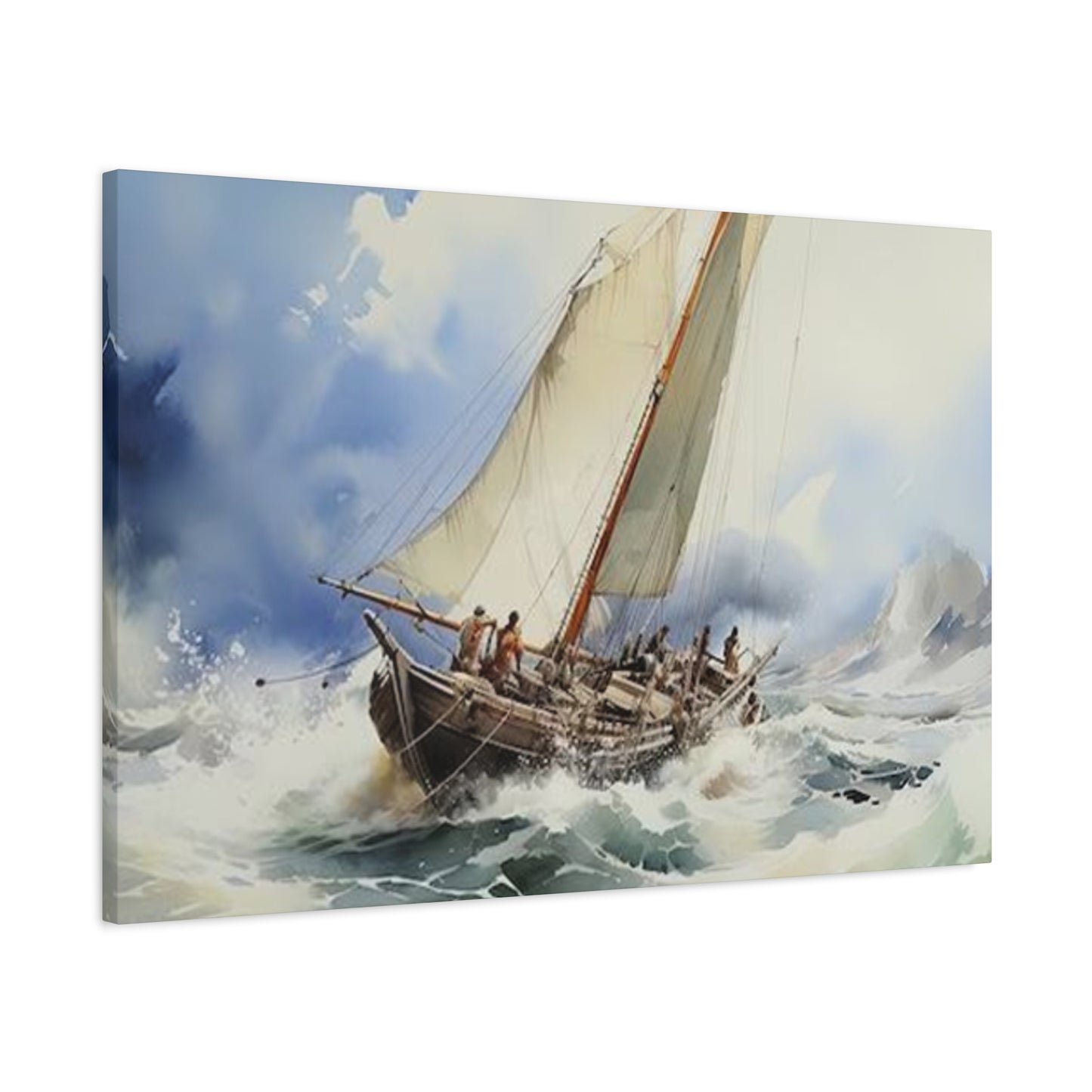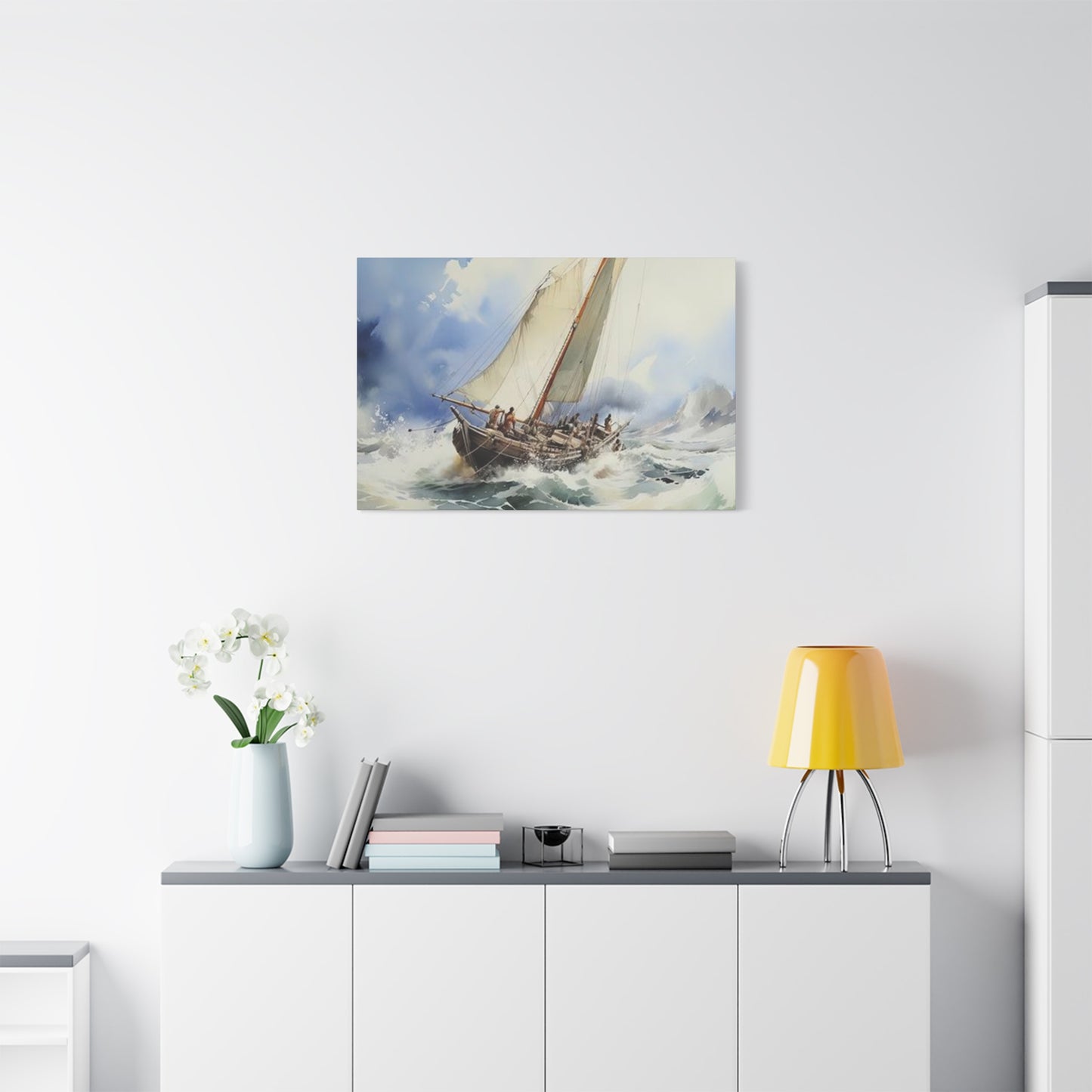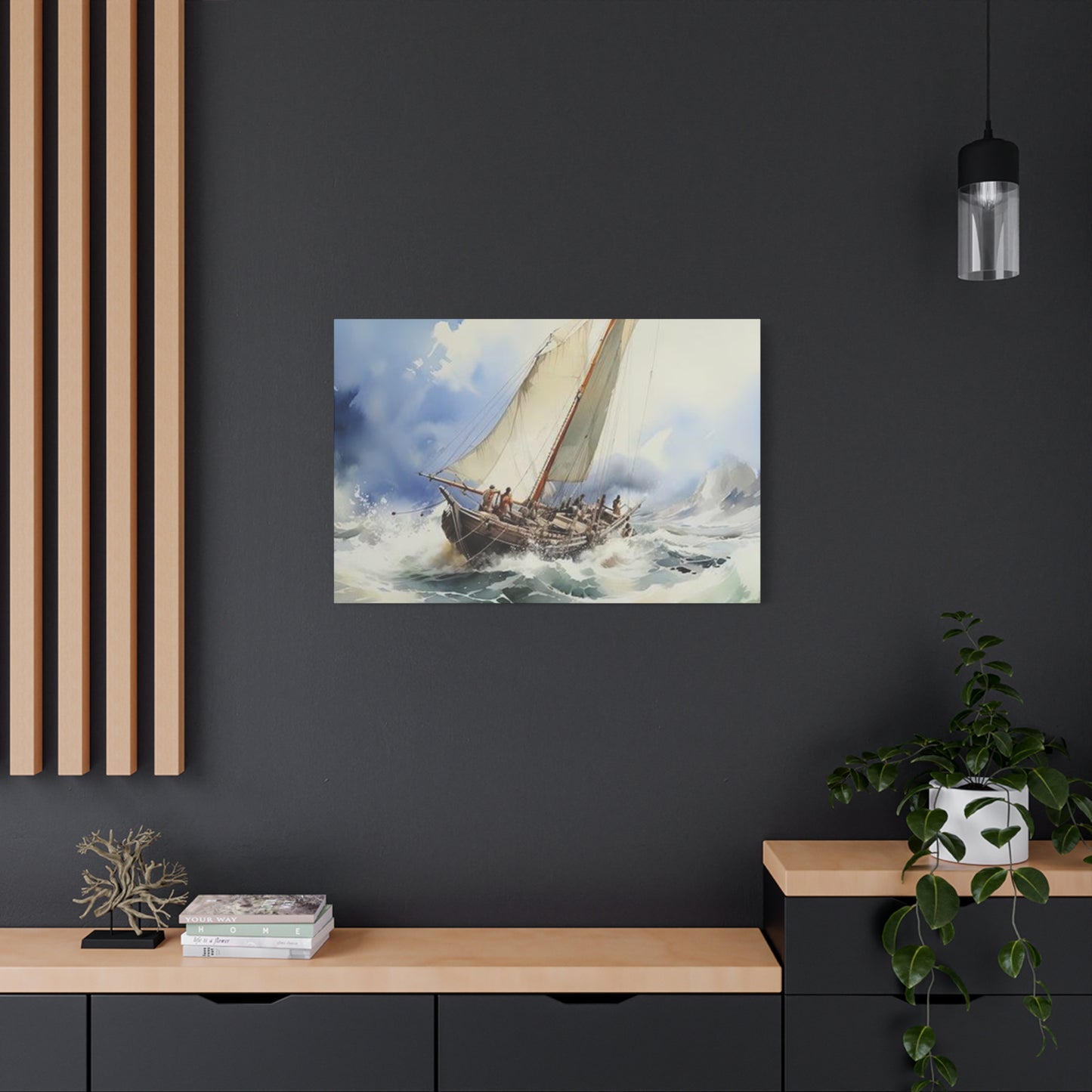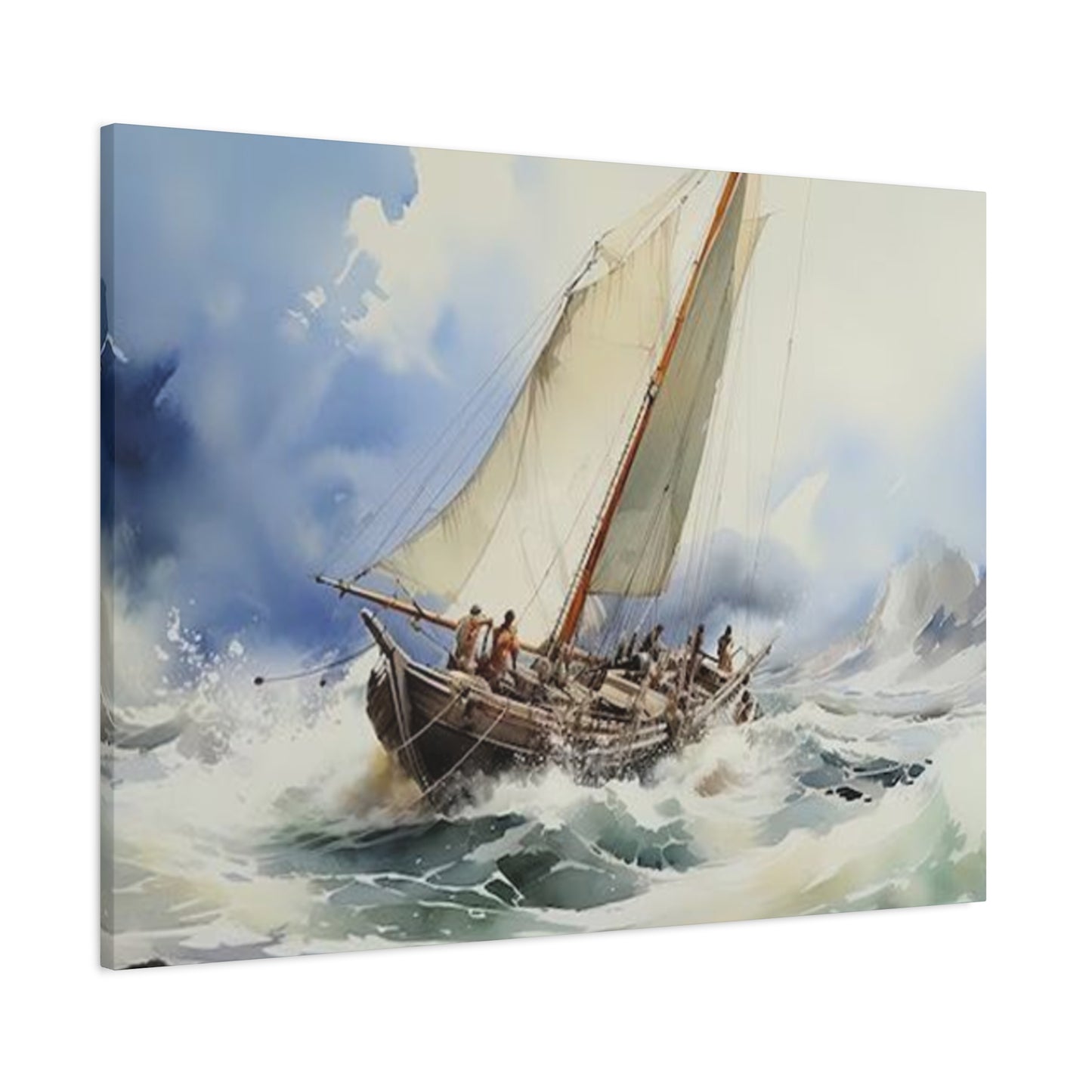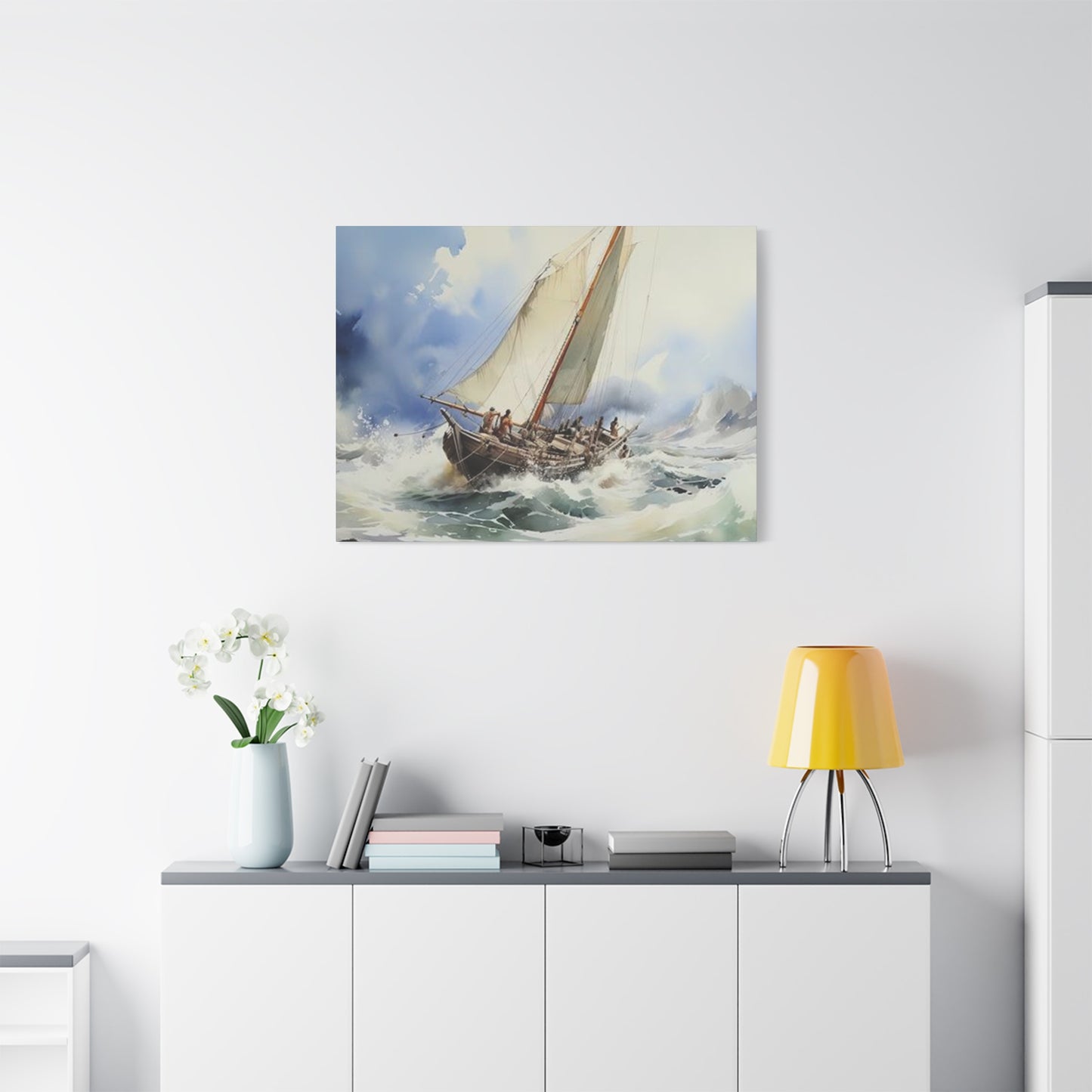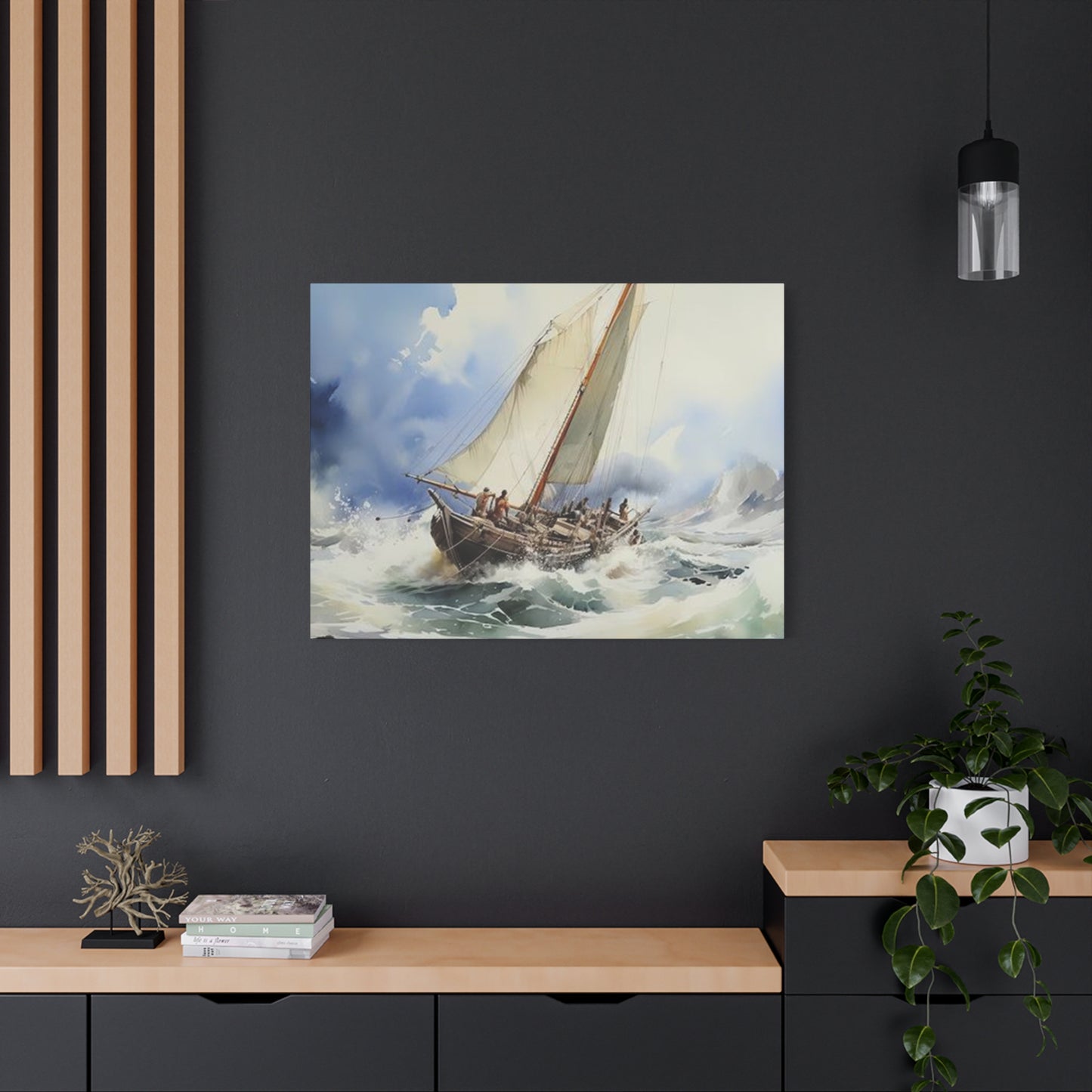Coastal Serenity: Create a Calming Ambiance with Ships in Ocean Painting Wall Art
The allure of maritime imagery has captivated homeowners and interior designers for centuries, bringing the timeless beauty of the sea into living spaces across the globe. Ocean ship wall art represents more than mere decoration; it embodies a connection to adventure, exploration, and the profound tranquility found where water meets sky. Whether you're drawn to the romantic elegance of sailboats gliding across calm waters or the dramatic power of vessels navigating stormy seas, incorporating nautical artwork into your home creates an atmosphere of sophistication and serenity.
Selecting the perfect pieces to adorn your walls involves understanding how different styles, colors, and compositions work within your existing décor while expressing your personal aesthetic preferences. From vintage-inspired representations that evoke nostalgia for bygone eras to contemporary interpretations that blend traditional maritime themes with modern artistic sensibilities, the world of ocean-themed artwork offers endless possibilities for transforming any room into a haven of coastal charm.
This comprehensive exploration delves into every aspect of incorporating maritime imagery into your interior design scheme, providing detailed insights into style selections, placement strategies, color coordination techniques, and maintenance practices. Whether you're furnishing a beachside cottage, adding character to an urban apartment, or simply seeking to infuse your space with the calming presence of the sea, this resource will guide you through creating a cohesive and visually stunning environment that reflects your love for all things nautical.
Ships in Ocean Painting Wall Art
Artistic representations featuring vessels navigating vast expanses of water have long served as powerful focal points in residential and commercial spaces alike. These creations capture the dynamic relationship between human craftsmanship and natural forces, presenting viewers with scenes that range from peaceful voyages under clear skies to dramatic encounters with towering waves. The technical skill required to depict water's movement, light's reflection, and a ship's intricate details makes these pieces particularly valuable as conversation starters and aesthetic anchors.
When selecting painted artwork depicting maritime vessels, consider the artistic technique employed by the creator. Oil paintings often provide rich texture and depth, with brushstrokes that add dimension and visual interest when examined up close. Watercolor interpretations tend toward softer, more ethereal qualities that evoke gentleness and fluidity. Acrylic works offer vibrant colors and crisp details that maintain their brilliance over time without the lengthy drying periods associated with oils.
The historical context of ship paintings adds layers of meaning to your decorating choices. Throughout art history, maritime scenes have documented exploration, commerce, naval warfare, and humanity's evolving relationship with the ocean. Reproductions of famous works by masters like J.M.W. Turner or Winslow Homer connect your space to this rich artistic tradition while contemporary artists bring fresh perspectives that speak to modern sensibilities about environmental consciousness and global interconnectedness.
Size considerations play a crucial role in achieving proper visual balance. Large-scale paintings create immediate impact and work exceptionally well above substantial furniture pieces like sofas or dining tables. Medium-sized works offer versatility, functioning beautifully as standalone features or as components within gallery wall arrangements. Smaller paintings provide intimate details that reward close inspection and work particularly well in personal spaces like home offices or reading nooks.
Color palettes within ship paintings significantly influence the mood they create. Deep blues and grays convey drama and intensity, perfect for spaces where you want to make bold statements. Softer pastels and muted tones generate calming atmospheres ideal for bedrooms and meditation areas. Warm sunset hues incorporating oranges, pinks, and golds bring energy and optimism to any environment while maintaining the maritime theme.
Frame selection enhances the overall presentation of your painted artwork. Traditional wooden frames in deep espresso or rich mahogany complement classic maritime scenes beautifully, adding formal elegance to dining rooms and libraries. Distressed or weathered frame finishes reinforce coastal aesthetics while suggesting authenticity and age. Clean-lined contemporary frames in metals or simple wood tones allow the artwork itself to command attention without visual competition from the border.
Tranquil Seas: Ocean Ship Prints
Printed reproductions of maritime scenes offer exceptional versatility and affordability while delivering impressive visual impact throughout your home. Modern printing technologies have evolved to produce images with remarkable clarity, color accuracy, and longevity that rival traditional painting methods. These accessible options allow design enthusiasts to experiment with different styles and compositions without significant financial commitment, making it easier to refresh your décor as tastes evolve.
The variety of printing substrates available expands creative possibilities beyond conventional paper. Canvas prints stretched over wooden frames provide texture that mimics original paintings while remaining lightweight and easy to hang. Metal prints create sleek, contemporary presentations with incredible color vibrancy and reflective qualities that add dimension. Wood prints transfer images directly onto natural grain patterns, creating organic fusion between subject matter and medium that particularly suits rustic or farmhouse aesthetics.
Digital artwork platforms have democratized access to maritime imagery from artists worldwide. Independent creators offer unique interpretations of ocean vessels that you won't find in mass-market retailers, allowing you to support emerging talent while acquiring distinctive pieces. Many artists provide customization options, adjusting colors, sizes, or compositional elements to better suit your specific decorating needs and personal preferences.
Print quality depends heavily on resolution and production methods. Look for images with high DPI ratings that ensure crisp details even when enlarged to substantial sizes. Giclée printing, which uses archival inks and specialized printers, produces museum-quality results with exceptional color accuracy and fade resistance. Understanding these technical specifications helps you make informed purchasing decisions that balance quality expectations with budget parameters.
Limited edition prints occupy a middle ground between mass-produced reproductions and original artworks. Numbered series with certificates of authenticity provide collectibility and potential value appreciation while remaining more accessible than unique pieces. These editions often feature artist signatures and special printing techniques that distinguish them from unlimited runs, making them particularly suitable for collectors who appreciate maritime themes.
Matting and framing choices dramatically influence how prints present themselves within your décor. Double matting in complementary colors adds visual sophistication while creating breathing space between image and frame. Float mounting suspends prints slightly away from backing boards, generating subtle shadows that enhance three-dimensional appearance. Glass options range from standard clear to museum-quality anti-reflective varieties that eliminate glare while providing UV protection against fading.
Seasonal rotation becomes practical when working with prints rather than original paintings. The affordability of quality reproductions allows you to maintain collections that reflect different moods and times of year. Summer months might feature bright sailing scenes with azure skies, while winter calls for dramatic stormy seas rendered in cool grays and deep blues. This approach keeps your décor feeling fresh without requiring permanent commitment to single pieces.
Maritime Beauty: Ocean Wall Decor
Creating captivating maritime environments extends beyond traditional artwork to encompass diverse decorative elements that reinforce coastal themes throughout your space. Integrating multiple types of ocean-inspired items generates layered visual interest while allowing your personality and design preferences to shine through. This holistic approach transforms rooms into immersive experiences that engage multiple senses and create memorable impressions on inhabitants and guests alike.
Three-dimensional nautical objects add tactile variety that flat artwork cannot provide. Vintage ship wheels mounted on walls serve as sculptural focal points while nodding to maritime heritage. Decorative oars arranged vertically or horizontally create linear emphasis that guides visual flow. Rope-wrapped mirrors or shadow boxes containing maritime artifacts like compasses, sextants, or ship models contribute authentic nautical character while serving practical functions.
Textile elements soften hard surfaces while reinforcing oceanic themes through pattern and color. Throw pillows featuring anchor motifs, wave patterns, or nautical stripes complement maritime wall art while adding comfort to seating areas. Area rugs in navy, cream, and sea-glass green ground furniture arrangements while echoing color schemes found in your artwork. Window treatments in light linen or canvas fabrics filter natural light beautifully while suggesting sailcloth without being overly literal.
Lighting fixtures designed with maritime inspiration illuminate spaces while contributing to overall aesthetic coherence. Pendant lights shaped like ship lanterns or constructed from rope and metal provide ambient illumination with thematic consistency. Sconces resembling porthole windows or lighthouse beacons add functional lighting while reinforcing nautical narratives. Table lamps with ceramic bases glazed in oceanic colors or topped with striped shades complete the maritime atmosphere while serving practical purposes.
Bookshelf styling presents opportunities to reinforce maritime themes through carefully curated displays. Stacking vintage atlases and sailing guides creates visual interest while suggesting intellectual curiosity about seafaring. Incorporating blue glass bottles, coral specimens, or shell collections among your volumes adds organic texture and color variation. Model ships positioned strategically among books become sculptural elements that bridge the gap between functional storage and decorative display.
Wall-mounted shelving allows you to rotate maritime accessories seasonally or according to mood. Floating shelves in weathered wood finishes provide platforms for displaying nautical treasures without overwhelming spaces with permanent installations. Arranging items in odd-numbered groupings creates pleasing asymmetry that feels naturally balanced. Varying heights and depths among displayed objects generates visual rhythm that keeps arrangements feeling dynamic rather than static.
Nautical Dreams: Ship Canvas Art
Canvas artwork depicting maritime vessels combines the aesthetic appeal of traditional painting with the durability and accessibility of modern printing technologies. This medium has become increasingly popular among decorators who appreciate the textured appearance of canvas surfaces without the expense or fragility associated with original paintings. The fabric substrate allows images to wrap around frame edges, creating finished presentations that eliminate the need for glass or matting while maintaining professional quality.
Stretched canvas constructions come in various depths that affect overall presentation and mounting options. Gallery-wrapped canvases with sides measuring one and a half to two inches deep can hang directly on walls without additional framing, creating clean contemporary looks. Thinner profiles work well within traditional frames for more classic presentations. The wrapping method determines whether images continue around sides or if edges remain solid colors, impacting how pieces appear from angles.
Canvas texture options influence the final appearance of printed images. Fine weave surfaces produce smooth, detailed reproductions ideal for photographic imagery or works requiring precise line definition. Coarse weaves create visible texture that enhances the handmade quality of artistic compositions, making printed reproductions feel more like original paintings. Matching texture choices to image content ensures optimal results that honor the artist's original intentions.
Protective coatings extend the lifespan of canvas prints while enhancing visual properties. Matte varnishes preserve natural canvas texture while providing barriers against dust, moisture, and minor impacts. Gloss finishes intensify color saturation and add reflective qualities that create depth perception. Satin coatings offer middle-ground solutions that combine slight sheen with texture preservation, suiting diverse aesthetic preferences and practical requirements.
Installation hardware varies depending on canvas weight and desired presentation. Standard sawtooth hangers work well for smaller pieces, allowing simple wire suspension from single nails or hooks. Heavier canvases benefit from D-rings positioned along upper frame edges, distributing weight more evenly. French cleats provide ultra-secure mounting while allowing easy removal and repositioning, particularly valuable for larger investment pieces.
Multi-panel canvas arrangements create dramatic visual impact through segmented compositions. Triptychs divide single images across three connected canvases, generating horizontal emphasis perfect for spaces above sofas or beds. Vertical arrangements suit narrow wall spaces like hallways or between windows. Polyptychs with four or more panels allow even greater creative flexibility, enabling you to wrap entire walls with continuous maritime narratives that command attention.
Classic Ocean Voyage Wall Prints
Traditional maritime imagery draws inspiration from centuries of seafaring history, capturing the romance and adventure associated with ocean exploration. These timeless designs appeal to those who appreciate historical authenticity and the stories embedded in every sailing voyage. Incorporating such pieces into contemporary spaces creates interesting temporal dialogues that honor heritage while demonstrating how classic aesthetics remain perpetually relevant in modern design contexts.
Historical sailing ships featured in vintage-style prints represent specific periods and regions, each with distinctive characteristics that knowledgeable viewers recognize. Clipper ships with their towering masts and clouds of canvas embody speed and commercial ambition from the mid-1800s. Tall ships with square rigging speak to earlier eras of exploration and naval power. Schooners with fore-and-aft sails suggest coastal trading and fishing traditions. Understanding these distinctions helps you select imagery that resonates with your personal interests and aesthetic preferences.
Reproduction techniques for classic maritime artwork have evolved significantly, allowing contemporary audiences to enjoy famous paintings and illustrations in their homes. Advanced scanning technologies capture every detail from original works, preserving texture, brushstroke patterns, and color nuances that previous reproduction methods lost. These faithful reproductions make iconic images accessible without compromising quality or disrespecting artistic integrity.
Sepia-toned and monochromatic interpretations evoke nostalgia while simplifying color coordination with existing décor. Black and white maritime prints integrate seamlessly into virtually any color scheme, providing flexibility that color images cannot match. The absence of color focuses attention on compositional elements like line, form, and tonal contrast, often revealing artistic qualities that vibrant hues might overshadow. These neutral palettes particularly suit minimalist or industrial interior styles.
Vintage map backgrounds combined with ship imagery create layered narratives about exploration and discovery. These compositions might show vessels positioned over historic navigation charts or ancient cartographic illustrations of sea monsters and mythical islands. The combination educates while it decorates, appealing to history enthusiasts and those fascinated by how humanity's geographical understanding evolved through maritime exploration.
Aged paper effects and distressed finishes add character that new-looking prints lack. Deliberately introducing yellowing, edge wear, or subtle staining creates artificial patina suggesting age and provenance. These treatments make modern reproductions feel like discovered treasures rather than recent purchases, supporting vintage-themed décor schemes. However, authenticity enthusiasts should ensure these effects appear intentional rather than cheap or poorly executed.
Coastal Vibes: Ships on Canvas
Capturing the essence of seaside living through maritime artwork involves selecting pieces that convey relaxation, natural beauty, and connection to coastal environments. This approach emphasizes lighter palettes, softer compositions, and subjects that suggest pleasant weather and peaceful waters rather than dramatic storms or historical battles. The resulting atmosphere feels welcoming and restorative, ideal for creating sanctuary spaces within busy modern lives.
Color palettes dominated by soft blues, sandy neutrals, and white create breezy coastal atmospheres that feel perpetually sunny. These hues reflect light beautifully, making spaces appear larger and more open regardless of actual square footage. Incorporating touches of coral, seafoam green, or weathered driftwood gray adds subtle variety while maintaining cohesive seaside aesthetics. The overall effect feels fresh and timeless rather than trendy or date-specific.
Compositional choices influence how coastal canvas art affects room ambiance. Horizontal formats emphasizing wide expanses of ocean and sky reinforce tranquility through their stable, grounded orientation. Vessels positioned small within large seascapes suggest peaceful coexistence between human activity and natural forces. Close-up details of rope, sails, or weathered wood bring intimate focus to maritime craftsmanship without requiring dramatic subject matter.
Weathered and distressed canvas treatments reinforce authentic coastal character. Slightly faded appearances suggest pieces have been exposed to salt air and sunshine, connecting them spiritually to actual seaside environments. Light surface texturing that mimics aging or water exposure adds tactile interest without damaging canvas integrity. These treatments work particularly well in casual spaces like beach houses, covered porches, or informal family rooms.
Mixed media approaches combining canvas with other materials create dimensional interest that flat images cannot achieve. Incorporating actual rope, netting, or weathered wood elements transforms prints into sculptural assemblages. Layering translucent materials over portions of images creates depth and mystery while maintaining recognizable maritime subjects. These techniques appeal to collectors seeking unique pieces that transcend mass-produced reproductions.
Abstract interpretations of maritime themes suit contemporary coastal aesthetics that prefer suggestion over literal representation. Loosely painted vessels barely emerging from gestural brushwork leave interpretation to viewers while unmistakably reading as nautical. Color-field compositions in oceanic hues evoke seaside atmospheres without depicting specific subjects. These approaches work beautifully in modern minimalist interiors where traditional realistic imagery might feel incongruous.
Canvas groupings arranged salon-style create casual, collected-over-time appearances that feel organic rather than precisely planned. Mixing frame styles, canvas sizes, and subject matter within coherent color families generates visual interest while maintaining thematic unity. This arrangement style suits eclectic coastal interiors that embrace imperfection and personal expression over formal design rules.
Vintage Marine Painting Wall Decor
Authentic antique maritime paintings and their faithful reproductions connect contemporary spaces to rich artistic traditions spanning several centuries. Original works carry provenance and historical significance that modern creations cannot replicate, making them particularly valuable for collectors who appreciate both aesthetic beauty and investment potential. Understanding what defines vintage marine art helps you make informed decisions whether acquiring originals or selecting reproductions that honor historical styles.
The golden age of marine painting roughly spans from the seventeenth through nineteenth centuries, when maritime commerce and naval power dominated global politics and economics. Dutch masters like Willem van de Velde the Younger established conventions for depicting ships with technical accuracy while creating dramatic atmospheric effects. British artists including J.M.W. Turner pushed boundaries with romanticized interpretations emphasizing light, weather, and emotion over documentary precision. American painters like Fitz Henry Lane developed luminous styles celebrating coastal landscapes alongside maritime activity.
Identifying authentic vintage paintings requires understanding period materials and techniques. Canvas weaves, paint chemistry, and stretcher construction methods changed over time, providing clues about when pieces originated. Craquelure patterns in aged oil paint develop organically over decades through natural curing processes that forgery attempts struggle to replicate convincingly. Professional appraisers use these and other forensic methods to authenticate works, protecting buyers from purchasing misrepresented items.
Reproductions of vintage marine art serve important roles for those who love historical styles but lack resources or access to acquire originals. High-resolution scanning and advanced printing technologies create remarkably faithful copies that capture subtle tonal variations and textural qualities of original brushwork. These reproductions allow wider audiences to enjoy masterworks while supporting museum conservation efforts when licensed officially through institutional partnerships.
Condition considerations affect both the appearance and value of authentic vintage paintings. Well-preserved examples with minimal restoration maintain maximum value and most accurately represent the artist's original vision. Works requiring conservation may offer acquisition opportunities at lower prices, though restoration costs and potential aesthetic compromises must be factored into decision-making. Understanding condition terminology helps you evaluate offerings from galleries, auction houses, and private sellers.
Frame originality matters significantly when dealing with antique maritime paintings. Period-appropriate frames that have remained with paintings since creation add historical integrity and often considerable value. However, original frames sometimes require repair or refinishing after centuries of environmental exposure. Deciding whether to restore, replace, or preserve damaged frames involves balancing historical authenticity against aesthetic preferences and conservation requirements.
Serene Blue: Ocean Ship Art
Blue-dominated maritime artwork creates psychological effects that designers and homeowners leverage to cultivate specific atmospheric qualities. This color's strong associations with water, sky, and tranquility make it particularly effective for establishing calm, contemplative environments. Understanding how different blue values and saturations affect spatial perception and emotional response enables you to select artwork that achieves your design goals while maintaining aesthetic appeal.
Light blues reminiscent of tropical waters evoke vacation relaxation and carefree attitudes. These refreshing tones work beautifully in spaces meant for unwinding after stressful days, including bedrooms, bathrooms, and reading nooks. Pairing light blue maritime art with white or cream walls amplifies airy, spacious feelings even in compact rooms. The resulting environments feel perpetually sunny regardless of actual weather conditions outside.
Medium blues balancing neither too light nor too dark provide versatile foundations that work across various design styles and room functions. These balanced tones suggest reliability and stability, making them appropriate for professional home offices or formal living areas. Medium blue ship artwork integrates easily with existing color schemes, complementing rather than dominating surrounding elements. This middle-ground approach suits those wanting maritime presence without overwhelming commitment to nautical themes.
Deep navy blues convey sophistication, depth, and timeless elegance that feels simultaneously classic and contemporary. Dark blue ocean scenes create dramatic focal points that anchor spaces with authority and confidence. These rich tones work particularly well in rooms with abundant natural light, where darkness enhances rather than diminishes perceived space. Pairing deep blue artwork with metallic accents in gold or brass creates luxurious combinations suitable for upscale interiors.
Monochromatic blue compositions using varied values create subtle sophistication while maintaining strong maritime identity. Artwork rendered entirely in blue tones from pale sky to deep ocean simplifies color coordination while focusing attention on compositional and textural elements. These pieces integrate seamlessly into blue-themed rooms or provide striking contrast against neutral or warm-toned walls. The restricted palette demonstrates artistic confidence and appeals to minimalist sensibilities.
Blue gradients depicting transitions from shallow coastal waters to deep ocean trenches create visual depth that expands perceived space. These compositions lead the eye progressively from foreground to background, generating three-dimensional illusion on flat surfaces. Positioning gradient-based ship artwork on focal walls opposite room entries draws visitors forward into spaces while establishing clear directional flow. This technique works especially well in narrow rooms where depth perception needs enhancement.
Complementary color accents within predominantly blue maritime art prevent monotony while maintaining oceanic themes. Small touches of orange or rust in sunset skies or weathered ship details create vibrant contrast that energizes compositions. Warm accents draw attention to specific areas while maintaining overall cool color dominance. These calculated introductions of warmth prevent blue-heavy rooms from feeling cold or uninviting despite aquatic subject matter.
Living Room Nautical Wall Style
The living room serves as the primary gathering space in most homes, making it ideal for showcasing maritime artwork that reflects your personality while creating welcoming atmospheres for family and guests. Strategic artwork placement in this high-traffic area influences the entire home's aesthetic tone, establishing design themes that extend into adjacent spaces. Thoughtful selection and arrangement of nautical pieces transforms ordinary living rooms into distinguished environments that balance style with comfort.
Scale relationships between artwork and furniture determine visual harmony within living spaces. Large statement pieces positioned above sofas should span approximately two-thirds to three-quarters of the furniture width, creating proportional balance without overwhelming. Artwork hung too small appears insignificant and fails to anchor seating areas effectively. Oversized pieces risk dominating spaces, making rooms feel crowded despite adequate square footage. Measuring carefully before purchasing prevents these common scaling mistakes.
Gallery wall arrangements suit living rooms with expansive blank walls needing visual interest across broad areas. Maritime-themed galleries might combine ship paintings, vintage nautical charts, framed knots, and three-dimensional elements like ship wheels or decorative oars. Maintaining consistent spacing between elements creates cohesion despite varying frame sizes and content types. Laying out arrangements on floors before hammering nails prevents regrettable placement decisions.
Color coordination between wall art and existing living room elements ensures cohesive rather than chaotic aesthetics. Pull accent colors from upholstery, area rugs, or window treatments into your maritime artwork selections. Alternatively, choose artwork first and build complementary color schemes around its dominant hues. Either approach works provided you maintain intentional color relationships rather than randomly introducing unrelated pieces.
Lighting design dramatically impacts how living room artwork appears and how effectively it establishes desired moods. Picture lights mounted directly above frames provide focused illumination that showcases artwork while creating ambient glow. Track lighting offers flexibility to adjust beam angles and intensity as furniture arrangements change. Dimmer switches allow mood modulation from bright viewing sessions to soft background presence during relaxed evening conversations.
Furniture arrangement should direct attention toward key artwork rather than competing with it for visual dominance. Angling seating slightly toward focal walls encourages natural viewing while facilitating conversation. Coffee tables positioned between viewers and artwork establish optimal viewing distances while providing functional surfaces. Avoiding furniture that blocks sightlines ensures everyone in the room can appreciate your maritime pieces regardless of seating location.
Ocean Horizon: Ship Wall Posters
Poster-format maritime imagery provides accessible entry points for those beginning to explore nautical décor or desiring flexibility to change artwork frequently. This economical option allows experimentation with different styles, colors, and subjects without significant financial investment. Modern poster printing achieves impressive quality that rivals more expensive alternatives when properly framed and displayed, making sophisticated maritime aesthetics accessible across all budget levels.
Paper quality significantly impacts how posters present themselves and how long they maintain pristine appearance. Standard poster paper works adequately for temporary or casual displays but shows wear relatively quickly. Heavyweight art papers better resist handling damage and present colors with greater depth and richness. Archival-grade materials ensure longevity, preventing yellowing and brittleness that compromise appearance over time. Selecting appropriate paper quality for your intended display duration and location ensures satisfactory results.
Poster sizes follow standardized dimensions that influence framing options and spatial requirements. Common formats include standard letter size for small accent pieces, medium sizes suitable for grouped arrangements, and large statement dimensions spanning several feet. Understanding standard measurements helps you pre-select appropriate frames from retailers offering ready-made options. Custom sizing remains possible through print-on-demand services, though standard dimensions typically offer better value.
Framing transforms casual posters into polished presentations worthy of prominent display. Simple black frames provide clean, modern aesthetics that suit virtually any image style or room décor. Natural wood frames in light finishes create casual coastal vibes perfect for nautical subjects. Metal frames offer industrial edges that work particularly well with contemporary interpretations of maritime themes. Matting adds professional polish while creating visual breathing space between image and frame.
Adhesive mounting versus traditional framing presents different advantages depending on your circumstances. Poster putty or removable adhesive strips allow damage-free hanging in rental properties where nail holes violate lease terms. Magnetic poster hangers provide quick installation and easy artwork rotation. These alternatives suit temporary situations or commitment-averse decorators who enjoy frequent change. Traditional framing better protects valuable posters while providing finished appearances.
Digital downloads enable immediate access to maritime poster designs from artists worldwide. Purchasing files rather than physical products eliminates shipping costs and delays while allowing you to control printing specifications. You select paper types, sizes, and finishes matching your preferences and budget. Local printing services or home printers produce results ranging from basic to professional depending on equipment quality and technical expertise.
Seaside Charm: Maritime Canvas Art
Capturing authentic coastal character through maritime canvas artwork involves selecting pieces that evoke specific emotional responses associated with seaside living. These works transcend mere ship depictions to communicate feelings of freedom, tranquility, and connection to natural rhythms that define beach communities. Whether you reside steps from the ocean or miles inland, thoughtfully chosen maritime canvas art brings seaside spirit into your daily environment.
Composition styles emphasizing horizontal expanses reinforce the peaceful stability associated with calm seas. Wide panoramic formats showcasing endless horizons create meditative focal points that encourage contemplation and stress relief. Vessels positioned within these broad seascapes appear harmoniously integrated with their environments rather than dominating them. This compositional approach suits spaces designed for relaxation and restoration where aggressive visual elements would feel inappropriate.
Soft color transitions mimicking natural phenomena create organic beauty that harsh contrasts cannot match. Gentle gradations from sky to sea, dawn pinks melting into daytime blues, or sunset oranges fading to twilight purples demonstrate nature's subtle artistry. Canvas reproductions capturing these delicate shifts benefit from high-quality printing that preserves tonal nuances. These sophisticated color relationships elevate maritime art beyond simplistic blue-and-white stereotypes.
Weathered aesthetic treatments give new canvas pieces character suggesting years of coastal exposure. Subtle fading effects, deliberately distressed edges, or light surface texturing create authenticity without requiring actual aging. These artificial patinas help contemporary artworks integrate seamlessly into vintage-inspired or shabby-chic interiors where pristine new items would feel jarring. The key lies in executing these treatments convincingly rather than obviously or cheaply.
Local maritime subjects create meaningful connections for those living near specific coastal areas. Canvas art depicting regional boat types, recognizable harbors, or characteristic coastal landscapes celebrates place-based identity. These location-specific pieces serve as daily reminders of why you chose to live in particular areas or as nostalgic connections to beloved vacation destinations. Commissioning custom work from local artists strengthens these geographical bonds while supporting regional creative communities.
Elegant Ship Scene Wall Prints
Sophistication in maritime imagery comes from refined compositions, restrained color palettes, and subjects suggesting timeless elegance rather than casual decoration. These distinguished pieces suit formal spaces where refined aesthetics take precedence over casual comfort. Understanding what defines elegance in nautical art helps you select pieces that elevate spaces through understated excellence rather than loud visual statements.
Classical composition principles guide elegant maritime artwork through balanced arrangements and harmonious proportions. Rule-of-thirds placement positions key elements at compositionally powerful intersections. Leading lines draw eyes through scenes following logical visual paths. Negative space provides breathing room that prevents cluttered appearances. Artists employing these time-tested techniques create work that feels naturally pleasing even to viewers unfamiliar with composition theory.
Monochromatic or limited color schemes contribute to elegant simplicity by eliminating chromatic complexity. Black and white maritime scenes emphasize form, light, and shadow without color distractions. Sepia tones suggest historical significance and artistic seriousness. Restricted palettes in blues and grays maintain nautical themes while exhibiting color restraint that reads as sophisticated. These limited approaches demand stronger compositional execution since color variety cannot compensate for structural weakness.
Subject selection influences perceived elegance significantly, with certain vessels and settings conveying greater refinement than others. Classic sailing yachts suggest leisure class associations and sporting tradition. Historic tall ships evoke heritage and ceremonial grandeur. Vessels depicted in calm harbors or golden-hour lighting communicate peace and prosperity. Avoiding subjects associated with commercial fishing, military conflict, or recreational motorboats maintains elegant rather than utilitarian or aggressive atmospheres.
Print quality becomes non-negotiable for elegant presentations, as technical imperfections undermine refined aesthetics. Fine art prints using archival inks on premium papers or canvas preserve detail and color accuracy essential for sophisticated work. Professional mounting and framing with acid-free materials demonstrate respect for artwork that casual treatments lack. These quality investments ensure pieces maintain appearance worthy of elegant settings throughout decades of display.
Understated frames allow elegant artwork to speak for itself without competing decorative elements. Simple profiles in black, dark wood, or subtle metallics provide necessary borders without drawing attention from images. Narrow frames suit contemporary elegance while slightly wider traditional profiles work for classic spaces. Avoiding overly ornate or distressed frames prevents vintage aesthetics from devolving into shabby rather than chic territory.
Ocean Journey: Sailboat Wall Decor
Sailboats represent human ingenuity harnessing natural forces, making them particularly meaningful subjects for those who appreciate sustainability, skill, and harmony with nature. These graceful vessels under wind power evoke romance and adventure while suggesting environmental consciousness increasingly valued in contemporary society. Decorating with sailboat imagery celebrates these qualities while creating visually appealing focal points throughout your home.
Traditional sailing vessels showcase craftsmanship and maritime heritage spanning millennia. Gaff-rigged schooners, square-rigged brigantines, and lateen-rigged dhows each tell stories about specific cultures and historical periods. Artwork depicting these traditional craft educates viewers about maritime diversity while providing aesthetic pleasure. The technical complexity visible in rigging systems demonstrates human problem-solving applied to transportation challenges long before mechanical power.
Modern racing sailboats present sleek contemporary aesthetics emphasizing speed and performance. Dramatic images capturing boats heeling sharply with crews working in perfect coordination convey excitement and athletic prowess. These action-oriented compositions inject energy into spaces that calmer maritime scenes might not provide. The clean lines and minimalist designs of performance sailboats suit contemporary interiors where traditional vessels might appear dated.
Sailboat silhouettes against dramatic skies create iconic imagery immediately recognizable as maritime. Backlit compositions emphasizing form over detail generate powerful graphic impact. Sunset or sunrise settings add color drama while maintaining simple, bold compositions. These easily readable images work effectively from distances, making them ideal for large rooms or spaces viewed primarily from afar rather than up close.
Regatta scenes depicting multiple sailboats competing provide dynamic energy and implied motion. The tension of racing, colorful spinnakers billowing, and boats closely matched creates visual excitement. These busy compositions fill space effectively while telling stories about skilled sailing and competitive spirit. They work particularly well in active family areas like kitchens, game rooms, or casual dining spaces where energetic atmospheres feel appropriate.
Peaceful single-boat compositions emphasize tranquility and solitary contemplation. A lone sailboat on calm waters suggests introspection, independence, and finding peace in simplicity. These meditative images suit personal spaces like bedrooms, home offices, or reading nooks where quiet reflection takes precedence over social energy. The singular focus creates clear focal points without compositional complexity demanding prolonged analysis.
Technical sailing illustrations showing boat components, rigging systems, or sail plans appeal to enthusiasts who appreciate mechanical details. These educational pieces combine decoration with information, serving reference functions alongside aesthetic purposes. Framing vintage sailing manuals or patent drawings creates masculine, library-appropriate décor popular in traditional studies. The black-and-white technical nature integrates easily across color schemes.
Coastal Homes: Ocean Ship Paintings
Residences located near coastlines naturally incorporate maritime themes that reflect their geographical context and inhabitants' lifestyle choices. Ocean ship paintings in these settings function as more than decoration, serving as artistic expressions of place-based identity and connection to surrounding environments. Selecting appropriate artwork for coastal homes involves balancing authentic maritime character with avoiding cliché or overly themed appearances.
Regional boat types featured in artwork celebrate local maritime traditions and heritage. New England coastal homes might display lobster boats or fishing schooners characteristic of the area. Pacific Northwest residences could feature tugboats, ferries, or traditional Native fishing canoes. Gulf Coast properties suit shrimp boats or offshore drilling service vessels. These region-specific choices ground décor in authentic local culture rather than generic nautical symbolism.
Weatherproofing considerations become essential when displaying artwork in homes exposed to salt air, humidity, and temperature fluctuations. Sealed canvas or acrylic-covered prints resist moisture better than paper behind standard glass. Frame materials like marine-grade stainless steel or specially treated woods withstand corrosive coastal environments that would quickly deteriorate standard materials. Investing in proper protection preserves artwork despite challenging conditions.
Color selections for coastal home artwork often reflect actual views from windows and porches. If your home overlooks azure tropical waters, artwork in similar color families creates cohesive visual flow between interior and exterior. Atlantic coast properties with cooler gray-blue waters might choose artwork in complementary subdued palettes. Matching or intentionally contrasting with actual ocean colors creates deliberate relationships between art and environment.
Scale appropriate to coastal architecture ensures artwork complements rather than overwhelms spaces. Beach cottages with intimate room proportions suit smaller, more numerous pieces creating collected atmospheres. Grand oceanfront estates with soaring ceilings demand substantial artwork scaled to architectural magnificence. Understanding your specific spatial parameters prevents purchasing pieces that appear lost or overcrowded within available display areas.
Indoor-outdoor living common in coastal regions influences artwork placement strategies. Pieces visible from outdoor entertaining areas extend aesthetic themes seamlessly between spaces. Weather-resistant reproductions in covered porches or screened rooms bring maritime art closer to actual coastal environments. This integrated approach to interior and exterior design creates unified homes rather than disconnected compartments.
Modern Marine Canvas Wall Art
Contemporary interpretations of maritime themes bring fresh perspectives to oceanic subjects that have inspired artists for centuries. Modern marine artwork breaks from traditional realistic representations, instead emphasizing artistic expression, emotional impact, and innovative techniques. These forward-thinking pieces suit current design trends favoring clean lines, bold statements, and individual creativity over conventional decoration.
Minimalist compositions distill maritime subjects to essential elements, removing extraneous details that distract from core concepts. A single sail against negative space, abstract wave patterns in limited colors, or geometric boat forms demonstrate how less becomes more through thoughtful reduction. These spare approaches align perfectly with contemporary interior design emphasizing simplicity, spaciousness, and intentional object placement over cluttered accumulation.
Bold color choices challenge traditional maritime palettes, introducing unexpected hues that grab attention and spark conversation. Vivid oranges, electric pinks, or neon greens applied to ship subjects create striking contrasts with typical ocean blues. These unconventional color applications demonstrate artistic confidence while maintaining recognizable nautical references. The resulting pieces work brilliantly as focal points in otherwise neutral contemporary spaces.
Mixed media techniques combine traditional painting with digital manipulation, photography, collage, or three-dimensional elements. Layering different materials and methods creates complex surfaces rewarding close inspection. These innovative approaches generate unique pieces impossible to reproduce exactly, appealing to collectors seeking originality. The experimental nature of mixed media work keeps maritime art feeling relevant and evolving rather than stagnant or purely historical.
Geometric abstraction reduces organic maritime forms to angular, mathematical compositions. Cubist-influenced ship depictions, tessellated wave patterns, or fractal-based ocean imagery demonstrate how traditional subjects accept radical reinterpretation. These intellectually engaging pieces appeal to viewers who appreciate conceptual sophistication alongside visual appeal. They bridge fine art and decoration, serving as serious artistic statements within livable spaces.
Large-scale installations create immersive experiences transcending conventional framed artwork. Multi-panel compositions wrapping around corners, floor-to-ceiling maritime murals, or sculptural elements protruding from walls transform entire rooms into maritime environments. These ambitious projects require professional installation but deliver unmatched impact. They work particularly well in commercial spaces like restaurants, hotels, or corporate offices seeking memorable branded environments.
Digital art and NFT-based maritime pieces represent cutting-edge collecting embracing technological innovation. Screen displays showing animated waves or ships, digital frames rotating through maritime image collections, or blockchain-certified unique digital artworks appeal to tech-forward collectors. While controversial in traditional art circles, these new formats expand possibilities for experiencing and owning maritime art in contemporary contexts.
Industrial materials like reclaimed metal, concrete, or weathered steel bring raw textures to modern marine artwork. Rust patinas suggesting maritime decay, cold steel echoing ship hulls, or concrete's brutalist aesthetic create edgy interpretations. These material choices suit loft spaces, industrial-style interiors, or masculine design schemes where softer traditional artwork might feel incongruous. The physicality of materials adds sculptural dimensions beyond purely visual elements.
Timeless Seascape: Ship Wall Designs
Certain artistic approaches transcend temporary trends, maintaining appeal across decades and design movements. Timeless maritime artwork possesses qualities allowing it to look equally appropriate in grandparent's traditional homes and grandchildren's contemporary spaces. Understanding what makes nautical art timeless helps you invest in pieces that won't feel dated as years pass and tastes evolve.
Classic composition principles employed by old masters remain effective regardless of when or how they're applied. Balanced arrangements, harmonious proportions, and thoughtful negative space create inherently pleasing images. Artwork respecting these foundational rules maintains relevance because human visual perception doesn't fundamentally change. Contemporary pieces using classical composition principles combine timeless structure with current stylistic elements.
Neutral color schemes dominated by blacks, whites, grays, and subtle blues never truly go out of style. These restrained palettes integrate easily into changing decorating trends without requiring complete room redesigns. While vibrant colors grab immediate attention, neutral maritime art provides lasting versatility that accommodates evolving tastes. The sophistication of restrained palettes also suggests maturity and confidence that loud colors sometimes lack.
Subject matter focusing on enduring maritime archetypes rather than specific contemporary references maintains relevance across time. Generic sailing vessels, abstract wave patterns, or atmospheric seascapes avoid dating themselves through recognizable modern details. Timeless subjects transcend specific eras, appealing to fundamental human fascinations with the sea that remain constant despite changing fashions.
Quality craftsmanship and materials ensure physical longevity matching stylistic timelessness. Archival inks that don't fade, acid-free papers preventing yellowing, and solid wood frames resisting warping maintain pristine appearance for decades. Investing in quality construction means artwork survives physically while remaining aesthetically relevant, maximizing value over long ownership periods.
Emotional resonance creates personal connections transcending stylistic trends. Artwork evoking profound feelings of peace, wonder, adventure, or nostalgia remains meaningful regardless of current design fashions. These emotional bonds keep pieces feeling important and worthy of display even as other décor changes around them. Timeless art touches something universal in human experience rather than merely matching current color schemes.
Moderate sizing offers flexibility across different spaces and life stages. Oversized statement pieces may overwhelm smaller homes or apartments, becoming difficult to accommodate as living situations change. Tiny pieces risk getting lost in larger spaces. Medium-sized artwork between three and four feet in any dimension provides versatility adapting to various wall sizes and room configurations throughout life's transitions.
Proven artistic styles with long histories suggest lasting rather than fleeting appeal. Impressionistic maritime scenes have remained popular for over a century. Realistic ship portraits satisfy consistent demands for technical excellence and historical accuracy. Abstract interpretations have shown staying power since mid-twentieth century modernism. These established styles inspire confidence that they'll remain acceptable aesthetically for years to come.
Bedroom Tranquility: Ocean Wall Art
Bedrooms function as personal sanctuaries where restorative sleep and peaceful relaxation take priority over public presentation. Artwork selections for these intimate spaces should support rather than disrupt tranquil atmospheres essential for proper rest. Maritime imagery naturally aligns with these goals through inherent associations with calming water, gentle rhythms, and escape from daily stresses.
Color psychology heavily influences bedroom artwork choices, with cool tones generally promoting better sleep than warm ones. Soft blues reminiscent of clear skies or tropical shallows lower heart rates and blood pressure according to research. Gentle grays suggesting overcast skies or calm seas provide neutral backdrops encouraging mental quiet. Avoiding intense reds, oranges, or yellows prevents stimulation counterproductive to rest and relaxation.
Peaceful subject matter depicts calm rather than dramatic conditions, avoiding imagery suggesting danger, violence, or extreme weather. Ships in protected harbors suggest safety and security rather than perilous voyages. Sailboats on glassy water convey serenity rather than exciting races. These tranquil scenes set psychological tones supporting sleep-friendly environments rather than stimulating adventure fantasies keeping minds active when rest is needed.
Horizontal compositions emphasize stability and restfulness through their orientation mirroring sleeping bodies. Wide seascape formats suggest endless peaceful horizons rather than vertical drama demanding upward attention. These stable arrangements feel grounding and calming, subconsciously communicating security and balance. Positioning horizontal maritime artwork above bed headboards creates natural focal points viewable from both standing and reclined positions.
Soft-focus or impressionistic styles reduce sharp details that might prove distracting when trying to fall asleep. Slightly blurred edges and gentle color transitions create dreamlike qualities bridging consciousness and sleep. These softer approaches feel less demanding of focused attention compared to crisp highly detailed work. The gentleness supports mental quiet rather than stimulating analytical observation.
Limited artwork quantity prevents visual overstimulation in spaces meant for rest. One significant piece above the bed provides sufficient focal interest without overwhelming the space with competing elements. Perhaps one smaller complementary piece on another wall offers secondary interest without creating busy environments. This restraint distinguishes peaceful bedrooms from gallery spaces demanding sustained visual engagement.
Entryway Accent: Nautical Ship Art
First impressions form within seconds of entering homes, making entryway artwork particularly influential in establishing overall aesthetic tone. Maritime pieces in these transitional spaces immediately communicate your design sensibility while providing welcoming focal points drawing visitors forward. Selecting appropriate nautical artwork for entries involves balancing immediate visual impact with cohesive introduction to interior styles found in adjacent rooms.
Commanding presence matters in entryway art since these spaces function primarily as pass-through zones rather than extended viewing areas. Bold compositions with clear subjects that read instantly even during brief glances make strong impressions. Simple powerful images work better than complex busy scenes requiring sustained study to appreciate. The goal involves catching attention momentarily while inviting further exploration of your home.
Size considerations for entryway walls differ from other rooms due to unique spatial constraints. Many entries feature limited wall space interrupted by doors, coat closets, or passages to other areas. Artwork must fit available space without competing with functional elements like mirrors, console tables, or seating. Measuring carefully and considering traffic flow patterns prevents awkward placements impeding comfortable movement.
Lighting conditions in entryways significantly affect artwork visibility and impact. Many entries lack natural light, relying entirely on artificial illumination. Selecting artwork with strong tonal contrast ensures visibility even in dim conditions. Adding dedicated picture lights or ensuring overhead fixtures adequately illuminate wall areas showcases your maritime pieces effectively. Well-lit entryways feel more welcoming than dim ones regardless of artwork quality.
Durability becomes important in high-traffic entryways where artwork faces increased risks of accidental contact. Secure mounting prevents pieces from shifting or falling if bumped during comings and goings. Protective glass or acrylic shields artwork from fingerprints or splashes near doorways. These practical considerations preserve investment while allowing you to display meaningful pieces in prominent locations.
Style preview established through entryway maritime art prepares visitors for aesthetics they'll encounter throughout your home. If interiors feature traditional nautical décor, vintage ship paintings in the entry set appropriate expectations. Contemporary spaces benefit from modern maritime interpretations signaling design sensibilities immediately. This preview function creates aesthetic continuity between public and private zones within your home.
Narrow vertical spaces common in entryways suit tall portrait-oriented maritime artwork or stacked arrangements of smaller pieces. Vertical emphasis draws eyes upward, making entries feel more spacious despite compact footprints. Ship subjects naturally accommodating vertical formats include tall ships with towering masts or lighthouse scenes. These orientations maximize limited wall space effectively.
Conclusion
Maritime artwork serves as far more than simple wall covering, functioning as meaningful expression of personal aesthetic preferences, emotional connections to the sea, and deliberate choices shaping home atmospheres. The journey through various styles, formats, and applications demonstrates the remarkable versatility of ocean ship imagery across different spaces, design approaches, and personal tastes. Whether drawn to traditional representations honoring maritime heritage or contemporary interpretations pushing artistic boundaries, the perfect pieces exist to transform your environment into a reflection of your unique vision.
Selecting and displaying maritime artwork successfully requires balancing multiple considerations including room function, existing décor elements, personal preferences, and practical factors like lighting and maintenance. No single correct approach exists, rather countless valid paths toward creating spaces that resonate personally while functioning effectively for daily living. The guidance provided throughout this exploration equips you with knowledge needed to make informed decisions aligned with your specific circumstances and goals.
Quality matters significantly when investing in maritime artwork intended for long-term enjoyment. Archival materials, proper framing, and appropriate placement preserve both aesthetic appeal and financial value over decades of ownership. While initial costs may exceed budget alternatives, quality pieces provide superior satisfaction and longevity that ultimately justify their expense. Viewing artwork purchases as investments in daily wellbeing rather than mere decoration shifts perspective toward valuing excellence over economy.
Personal meaning elevates artwork from decorative objects to cherished possessions that enrich life beyond their visual contributions. Pieces connecting to important memories, representing aspirational values, or expressing authentic interests create emotional bonds that generic décor cannot match. These personal connections make homes feel genuinely inhabited by real people with distinct personalities rather than staged showrooms following impersonal design formulas. Prioritizing meaningful selections over trendy purchases creates environments supporting long-term satisfaction.

















